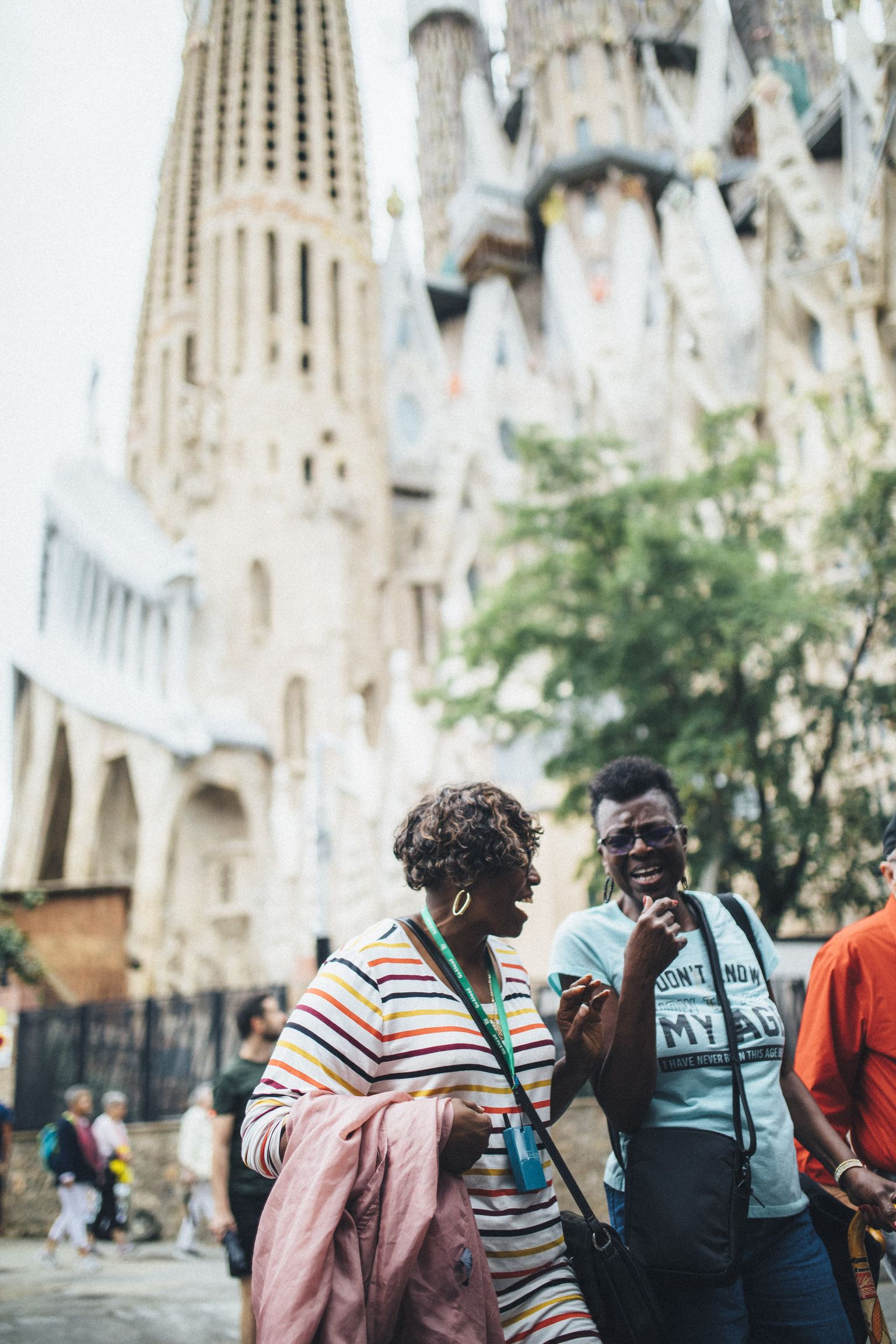South Korea tours
Colorful, traditional hanbok. Lively street markets. Deliciously innovative food. An intoxicating blend of the old, the new, and the futuristic awaits all who travel to South Korea.

Traveling with a group?
Bring 6+ friends with you, and your spot is free (including airfare)!
Learn more
Combine your Club Go credits
Earn rewards for every trip with Club Go’s automatic, free membership.
Join our loyalty program)
Already booked? Add excursions!
Add handpicked experiences and stay longer on a tour extension.
Customize your tourExperiential travel made easy
You dream it. We’ll take care of every last detail.
Pick your perfect trip
We offer 200+ immersive, guided tours around the world. Wherever you choose to go, you’ll enjoy lots of advantages that make traveling with us different.
Put just $99 down
That’s all it takes to secure a spot on one
of our group tours when you sign up for
AutoPay. Plus, you can pay in interest-free,
monthly installments.
Prep your packing list
While you’re deciding what to take, we’ll be busy arranging your hotels, meals, tickets, and more tour essentials. That’s what going guided is all about.
Go far (and get rewarded)
Take off on your big adventure— but why stop there? Every trip you book with us earns rewards that you can use to keep expanding your horizons.
Not sure which South Korea tour is right for you? We're here to help.

Chat online
Chat instantly with us during our normal hours, or leave a message and we’ll get back to you ASAP.
Schedule a call
Let us know your preferred time to chat and a travel expert will reach out.
Travel tips for South Korea trips
South Korea uses the South Korean won, denoted by the symbol “₩” or the acronym “KRW.”
To stock up, order some South Korean won from your bank before departing or use your debit card at an ATM once you arrive. For tips on using the won while on our tours of South Korea, check out our blog on currency exchange →
The official language spoken in South Korea is Korean. Also known as “Hangul” in South Korea, Korean is the native language of most people and is used for all official communications, education, and daily conversations.
We recommend at least five days for tours to South Korea.
A diverse country with a rich culture and history, South Korea offers plenty of things to do while touring the country. Some of the most popular activities to do in South Korea include:
- Exploring historical sites and palaces. South Korea has an incredible history that dates back over 5,000 years, and there are numerous historical sites and palaces to explore.
- Trying Korean cuisine. South Korea is renowned for its delicious and diverse cuisine. You can find authentic Korean food everywhere, from street stalls to Michelin-starred restaurants.
- Visiting modern urban centers. South Korea boasts dynamic and modern cities like Seoul, Busan, and Incheon. These urban centers are characterized by their high-rise buildings, dense populations, and vibrant nightlife.
With modern, neon-washed cities, thriving cultural centers, and majestic landscapes, this South Korea has plenty to discover. Here are some of the top attractions to visit on South Korea tours:
- Gyeongbokgung Palace. This 14th-century palace in Seoul is one of the top things to see while on South Korea tour packages. It was the primary royal palace of the Joseon dynasty and is the largest and most beautiful of Seoul’s five palaces. A must-see is the Palace Royal Guard Changing Ceremony, which occurs twice daily.
- The DMZ. Established in 1953 as a buffer between North and South Korea, the Korean Demilitarized Zone (DMZ) is roughly 2.5 miles wide. During an excursion on our guided tour of South Korea, you can descend into the Tunnel of Aggression and learn how North Koreans built it in an effort to launch a surprise attack on the South.
- Gwangjang Market. Bustling Gwangjang Market, the city’s oldest traditional market, is where you’ll find everything from street food to silks to hanbok—traditional Korean clothing whose origins date back more than 2,000 years.
This multi-faceted country offers a wide range of unique experiences for travelers. Here are three you might consider on trips to South Korea:
- Learn how to make kimchi. Without kimchi, a traditional side dish of spicy, fermented vegetables, no Korean meal would be complete. In a hands-on cooking class, you can learn how to make traditional kimchi using ingredients like cabbage, radishes, gochugaru, garlic, and ginger.
- Visit the vast Jagalchi Fish Market. A great place to experience Korean culture, South Korea’s largest seafood market offers a wide variety of fish caught fresh every day. You can have your seafood cooked fresh to order in one of the market’s many restaurants.
- Tour Busan’s harbor. As you cruise along Busan’s harbor, you’ll see landmarks such as the double-decker Gwangandaegyo Bridge, the impressive Skyscraper Center, and the rest of the city’s famous skyline.
Get the full scoop on everything to do and see in our Ultimate Guide to South Korea →
There are four distinct seasons in South Korea, each offering different weather conditions:
- Spring (March to May). This is a beautiful time to visit South Korea as the weather starts to warm up. Spring temperatures typically range from mild to warm, with daytime highs averaging between 50°F to 68°F.
- Summer (June to August). It can be hot and humid during the summer in South Korea, with temperatures often exceeding 86°F in many regions.
- Autumn (September to November). Autumn is another fantastic time for South Korea trip packages, especially to take in the breathtaking foliage. The weather is pleasant, with cool temperatures ranging from 50°F to 68°F.
- Winter (December to February). With temperatures dropping below freezing in many parts of the country, winter can be quite cold in South Korea.
When visiting South Korea, it’s essential to be mindful of the country’s cultural customs and etiquette to show respect to the locals and ensure a positive experience. Here are some important customs and etiquette to be aware of while on South Korea tour packages:
- Bowing. Bowing is an important form of greeting and showing respect in South Korea. A slight bow is appropriate when meeting someone for the first time or in a formal setting. The depth of the bow depends on the status and age of the person you are greeting. A deeper bow shows more respect.
- Removing shoes. It is customary to remove your shoes when entering someone’s home, certain traditional buildings, and some restaurants or guesthouses. Look for a shoe rack or designated area for shoes and follow the lead of the locals.
- Using both hands. When giving or receiving objects, especially money or business cards, it is polite to use both hands as a sign of respect. Similarly, when accepting items from someone, receive them with both hands.
- Respecting elders. Korean culture places a strong emphasis on respecting elders. Use polite language and gestures when speaking to older people, and avoid using their names without proper titles.
South Korea has something to offer everyone, from its stunning scenery and rich culture to its delicious food and vibrant nightlife. The best time to take a tour of South Korea depends on your preferences and what you want to experience during your trip. Here are some considerations for each season:
- Spring (March to May). Thanks to mild and pleasant weather, spring is a popular time to visit South Korea. The cherry blossoms typically bloom in late March to early April, creating stunning landscapes across the country.
- Early summer (June). If you want to avoid peak tourist crowds and enjoy slightly cooler temperatures before the heat and humidity of mid-summer set in, early summer is an excellent time to visit.
- Late summer to early autumn (August to early September). This period can be hot and humid, but it offers a chance to experience lively summer festivals and beach activities along South Korea’s coasts.
- Autumn (September to November). Autumn is another great time to visit, especially for its fall foliage. The weather is mild, and the landscapes become a tapestry of colors, making it a favorite season for photography and outdoor activities.
- Winter (December to February). Winter is ideal for those who enjoy winter sports and activities like skiing and snowboarding. The snowy landscapes in places like Gangwon Province can be quite picturesque. However, be prepared for cold temperatures.
With a diverse range of attractions, from historical sites to energetic cities and stunning natural landscapes, South Korea has plenty of exciting places to visit. Here are three of the best to explore on trips to South Korea:
- Seoul. The capital and largest city of South Korea, Seoul is a dynamic metropolis where modernity and tradition seamlessly blend. Key attractions include the ancient Gyeongbokgung Palace, Bukchon Hanok Village, the bustling shopping district of Myeongdong, and Dongdaemun Design Plaza.
- Gyeongju. Often referred to as the “museum without walls,” Gyeongju is a city steeped in history and was once the capital of the ancient kingdom of Silla. It is a UNESCO World Heritage site with numerous historic treasures, such as the Bulguksa Temple and Seokguram Grotto. Gyeongju’s beautiful parks, royal tombs, and the ancient observatory at Cheomseongdae are also worth exploring.
- Busan. The second-largest city in South Korea is known for its beautiful beaches, delicious seafood, and lively culture. Busan is home to the bustling Jagalchi Fish Market and the colorful Gamcheon Culture Village, known for its street art and murals.
South Korean cuisine is diverse and known for its bold flavors and unique dishes. Here are three popular foods to try on trips to South Korea:
- Kimchi. A staple side dish in South Korean cuisine, kimchi is made from fermented vegetables, most commonly napa cabbage and Korean radishes, seasoned with chili pepper, garlic, ginger, and other spices. It is a vital part of every Korean meal and is served in various forms and flavors.
- Bulgogi. This popular Korean dish is made from thinly sliced marinated beef (or sometimes pork or chicken) that is grilled or stir-fried. The meat is typically marinated in soy sauce, sugar, sesame oil, garlic, and other seasonings, giving it a savory and slightly sweet taste. Bulgogi is often served with rice and lettuce leaves to make wraps.
- Bibimbap. Delicious and colorful, bibimbap consists of a bowl of steamed rice topped with various vegetables, cooked meat (usually beef), a fried egg, and gochujang (spicy red pepper paste). The ingredients are mixed together before eating, creating a flavorful and satisfying meal.
Consider the season and your planned activities when packing for South Korea tours. Here are some essential items to include in your packing list:
- Layered clothing. Pack clothing suitable for the season of your visit. In general, lightweight, breathable clothes are ideal for spring and summer, while warmer clothing, including layers, is necessary for fall and winter.
- Comfortable walking shoes. You’ll want to bring comfortable walking shoes, especially if you plan to explore cities or hike in South Korea’s national parks.
- Sun protection. High-SPF sunscreen and lip balm, sunglasses, long-sleeve shirts, and a wide-brimmed hat to protect yourself, especially during the summer months.
- Adapters and chargers. South Korea uses Type C and Type F power outlets, so bring the appropriate travel adapter for your electronic devices.
Once you’ve reserved one of our guided tours to South Korea, we’ll send you detailed information about what to bring. Download the free Go Ahead Tours app before you take off, so you’ll have all the info you need about your trip right in your pocket.

